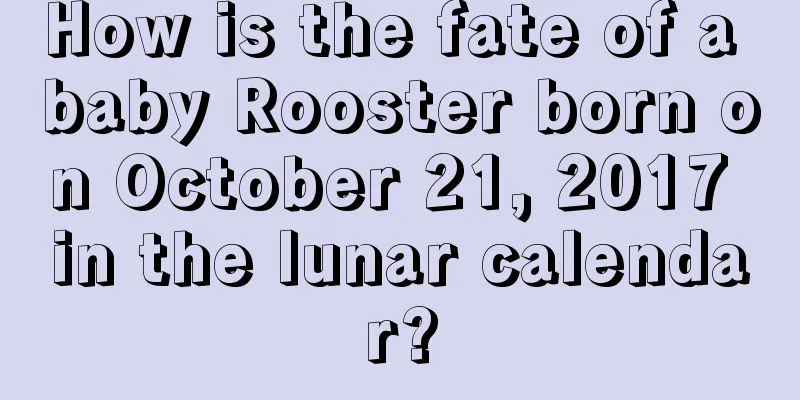The 25th day of the first lunar month is the “Da Ting Cang Festival”. How did the “Ting Cang Festival” come about?

Introduction: There is a saying among the Chinese people that the 20th day of the first lunar month is the small filling of the granary, and the 25th day of the first lunar month is the big filling of the granary. The 25th day of the first lunar month is called the "Filling the granary Festival". Why is the Tiancang Festival on the 25th day of the first lunar month? How did the Tiancang Festival come about? With these questions, please follow the editor to learn more! The first month of the lunar calendar is an important month. Let us pay attention to the traditional festivals and solar terms in the first month and have a good start of the month.The 25th day of the first lunar month - Filling the Granary Festival"Tian Cang Festival" is an ancient folk festival for praying for a good harvest, which is held on the 25th day of the first lunar month. "The fifth day of the first lunar month is the Granary Filling Festival," says the Annals of the Capital. On that day, people would either eat their fill to show that their granaries were full, or use ashes to make a granary shape and put some grain inside to show that the granaries were full, or they would offer sacrifices to the granary god to pray for a good year and a full granary. There are two types of Filling the Granary Festival: the small one is on the 20th of the first lunar month, when people offer sacrifices to pray for a good harvest; the big one is on the 25th. "Jiexiu County Chronicles": "On the 20th, it is called 'Xiaotiancang'. Cook yellow rice cakes, light lamps and worship Buddha." "Datongzhi": "On the 20th, it is called 'Xiaotiancang'; on the 25th, it is called 'Datiancang', and buy more rice, flour, firewood and charcoal.The Origin of the Filling Cang FestivalAs for the origin of the Filling the Granary Festival, according to folk legends in northern my country, it comes like this: It is said that there was a severe drought in the north for three consecutive years. The land was barren for thousands of miles and not a single grain of rice could be harvested. However, the royal family did not care about the lives of the people and still collected imperial grain. As a result, there were years of famine and starving people were everywhere, especially at the end of the year, when the poor were left with nowhere to turn and countless people died of hunger and cold. At this time, the granary official who was in charge of the royal grain storage could not bear to see his elders and brothers starving to death, so he took the initiative to open the royal granary to provide relief to the victims. He let the people rush to transport all the royal grain and saved the victims. But he could not report to the royal family, so on the 25th day of the first lunar month he set fire to the warehouse and was burned to death. In order to commemorate this anonymous warehouse official, later generations would use fine charcoal ash or firewood ash to fill the warehouse inside and outside the courtyard on this day to show their remembrance of the warehouse official. According to relevant historical records: The 25th day of the first lunar month is the day for filling the granary. People make noodle soup and steam rice to eat. At dawn, fine ash is scattered everywhere inside and outside the gate to make the shape of a granary, which is called "da granary". Placing a small amount of grains in the granary and covering it with tiles or other materials is called filling the granary. Therefore, in the old days, when the northern families needed to fill their granaries, in the early morning, they would hear the sound of "click! click!" from every household. But you would see older people using winnowing baskets or wooden shovels to scoop up sifted charcoal ash and firewood ash, and then knocking it with a wooden stick in front of the door, spreading it into a round granary shape. Some were even inlaid with lace, auspicious words, and ladders to the granary. Grains were also scattered in the granary, symbolizing a good harvest, to express people's deep affection for the official who filled the granary to save it. In this way, the story of filling the granary has been passed down from generation to generation.Summary: After reading the introduction in the above article, we know that the 25th day of the first lunar month is the Tiancang Festival. We also know the origin of this festival and some traditional folk activities. You can learn about it. I also hope that in the new year, all readers will have happy families and everything goes well! After reading this article, there are more exciting contents in the special topic of the first month of the lunar calendar. Let’s take a look! |
Recommend
How about June 26th of the lunar calendar in 2021? Is it a good day to start renovation?
The entire month of June in the lunar calendar of ...
Is the fate of a boy born on February 26, 2019 in the lunar calendar good?
Is the fate of a boy born on February 26, 2019 in ...
Is it auspicious to have rain in the Lesser Heat in 2019? What is the saying about rain in the Lesser Heat?
Introduction: Minor Heat is one of the 24 solar te...
Can’t we move house at the beginning of spring? Will moving during the beginning of spring cause turbulence?
The Beginning of Spring is one of the four beginni...
Is October 24, 2019 a good date for marriage? How to hold the bouquet?
Is October 24, 2019 a good date for marriage? How...
Is it a good idea to pray on the 15th day of the 10th lunar month in 2021? Can I pray?
There are certain rules for choosing the time to p...
What zodiac sign are those born on Laba Festival in 2020? Analysis of the personality characteristics of the zodiac signs!
Introduction: People born on different days belong...
What are the meanings and benefits of drinking Laba porridge on Laba Festival? Why do we drink Laba porridge on Laba Festival?
Introduction: Laba Festival is an important festiv...
Is it okay to burn incense and pray the day before Double Ninth Festival in 2019? When is Double Ninth Festival in 2019?
Introduction: Generally, you need to choose an aus...
Is it auspicious to move into a new house on the Autumnal Equinox in 2019? Recommended auspicious days for moving around the Autumnal Equinox in 2019!
Introduction: In the traditional culture of our co...
Will it be rainy in 2021? What kind of content is suitable to post on WeChat Moments?
Starting from the Rain Water solar term, the earth...
Is it appropriate to get the certificate the day before the heavy snow in 2019? What should I pay attention to when registering for the certificate?
Introduction: Sometimes we have to choose an auspi...
Is the eighth day of the third lunar month in 2018 an auspicious day?
Introduction: People like to do things on auspicio...
Isn’t the sixth day of the third lunar month in 2021 a bad day? Can’t the market open on that day?
A lot of people open businesses every day, but not...
Is it a good date to open a new store on December 8, 2018?
Shui Mo Xiansheng website provides you with more ...









